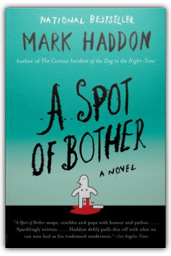
A Washington Post Best Book of the Year 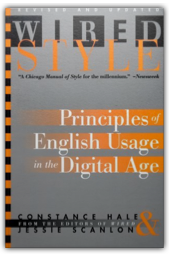
Remarkably more down-to-earth than its predecessor, the revised Wired Style guide is a handy little reference for digerati, or those who think they are. This version is much more accessible to general Internet users, not unlike the Web, which has become more mainstream in the three years since the original publication was released. (The previous edition was criticized for its pomposity and near-incomprehensibility.) This revision still delivers the inside scoop, though. You'll not only learn how to talk about cyberspace (for example, you can read about the evolution of the term "email" and why Wired prefers it without the hyphen), you'll also get an encyclopedic listing of all the trendy lingo that describes it. 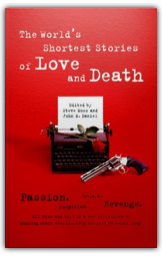
Building on the enormously successful World's Shortest Stories, here's an all-new collection of super-short fiction-each story a mere 55 words long! With nearly 150 contributors, including Charles Schulz and Fannie Flagg, these stories offer love, betrayal, passion, and death-in less time than it takes to count the words in this blurb! 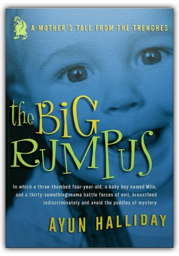
Of the many stay-at-home mommies who dream of writing the Great American Novel, few actually try; fewer still get published. Though not a novel, The Big Rumpus certainly is the Great American Tale of one woman's schlep through early motherhood—honest, hilarious, and irresistibly naughty. Ayun Halliday, a highly caffeinated and refreshingly immodest city gal, acknowledges that motherhood is pretty much like contending with a cloud of locusts swarming toward one's wheat—then laughs her "heiner" off about it. 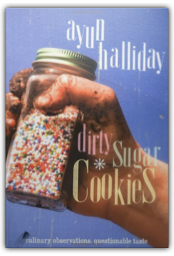
Ayun Halliday's fourth book, Dirty Sugar Cookies, takes readers into the unpredictable mind and comical experiences of a true anti-foodie, giving even the most hopeless cooks a moment of relief from self-criticism, and the least discriminating eaters a reality check. Halliday started out a repressed picky eater without so much as a single fast-food-loving sibling to save her from the gourmet ambitions of a mother whose recipe for Far East Celery once received favorable mention in the Indianapolis Star. Her palate has since expanded to the degree that she'll hork down anything from chili-smothered insects that pass for an exotic destination's local delicacies to a peanut found wedged between the cushions of a theater seat. 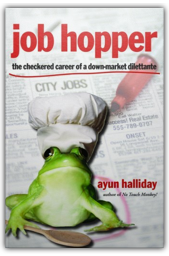
During her time in the paid job market, Ayun Halliday has managed to rack up a terrifying array of short-lived stints, including ersatz costumer designer, belligerent artist's model, bane of professional secretaries everywhere (a.k.a. "temp"), and Bert of Sesame Street for enthusiastic department-store crowds. 
Ayun Halliday may not make for the most sensible travel companion, but she is certainly one of the zaniest, with a knack for inserting herself (and her unwitting cohorts) into bizarre situations around the globe. Curator of kitsch and unabashed aficionada of pop culture, Halliday offers bemused, self-deprecating narration of events from guerilla theater in Romania to drug-induced Apocalypse Now reenactments in Vietnam to a perhaps more surreal collagen-implant demonstration at a Paris fashion show emceed by Lauren Bacall. From taming the wild dog packs of Bali to requiring the services of a bonesetter in Sumatra, Ayun Halliday offers up the best of her itinerant foibles as examples of how not to travel abroad. For instance, on layover in Amsterdam, Halliday finds unlikely trouble in the red-light districteliciting the ire of a tiny, violent madam,and is forced to explain tampons, which she admits, "might have looked like white cotton bullets lined up in their box," to soldiers in Kashmir"Theyre for ladies. Bleeding ladies." A self-admittedly bumbling vacationer, Halliday shareswith razorsharp wit and to hilarious effectthe travel stories most are too self-conscious to tell. |
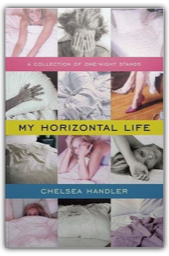
In this raucous collection of true-life stories, actress and comedian Chelsea Handler recounts her time spent in the social trenches with that wild, strange, irresistible, and often gratifying beast: the one-night stand. 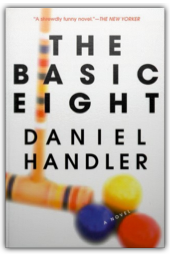
Flannery Culp wants you to know the whole story of her spectacularly awful senior year. Tyrants, perverts, tragic crushes, gossip, cruel jokes, and the hallucinatory effects of absinthe — Flannery and the seven other friends in the Basic Eight have suffered through it all. But now, on tabloid television, they're calling Flannery a murderer, which is a total lie. It's true that high school can be so stressful sometimes. And it's true that sometimes a girl just has to kill someone. But Flannery wants you to know that she's not a murderer at all — she's a murderess. 
Who is Ida B. Applewood? She is a fourth grader like no other, living a life like no other, with a voice like no other, and her story will resonate long after you have put this book down. How does Ida B cope when outside forces—life, really—attempt to derail her and her family and her future? She enters her Black Period, and it is not pretty. But then, with the help of a patient teacher, a loyal cat and dog, her beloved apple trees, and parents who believe in the same things she does (even if they sometimes act as though they don't), the resilience that is the very essence of Ida B triumph...and Ida B. Applewood takes the hand that is extended and starts to grow up. 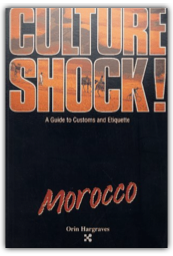
Orin Hargraves, author of Culture Shock! Morocco knows whereof he speaks. As a Peace Corps volunteer to that North African country in the early 1980s, he learned firsthand about the customs and culture in the Maghreb. Hargraves covers the bases with a basic but thorough overview of Moroccan history, geography, and politics. He delves into the psychological and cultural mores of the Moroccan people, from their attitudes about men, women, and family to their views on homosexuality, hospitality, and religion. The areas for potential misunderstanding between western visitors and Moroccans soon become clear, and Hargraves does his best to offer clear explanations of Moroccan thought and behavior. 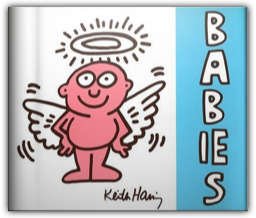
The "radiant baby" and "family dog" were recurring themes for Keith Haring. He drew both motifs in many incarnations: babies radiant with halo and wings, babies dandled on daddy's shoulder, or cradled in mommy' arms. Throughout his too-short life Keith Haring had a special affinity for children. He had many loving relationships with the children of friends and found great rewards in the art projects he frequently did with schoolchildren. Matched with insightful entries from his writings, which reveal his thoughts on life, children, friendship, and art, these joyful drawings continue to entertain and provoke. 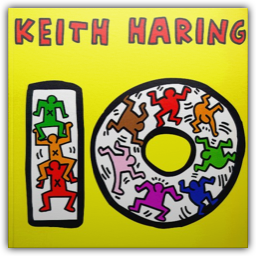
While being exposed to a great artist, young readers will also be counting in four different languages before they know it. Numbers one through ten are clearly translated into English, Spanish, French, and German, while Haring's bright, kid-friendly illustrations make counting an entertaining romp . 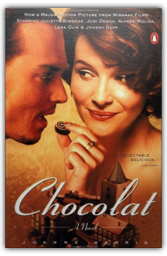
Vianne Rocher and her 6-year-old daughter, Anouk, arrive in the small village of Lansquenet-sous-Tannes——"a blip on the fast road between Toulouse and Bourdeaux"—in February, during the carnival. Three days later, Vianne opens a luxuriant chocolate shop crammed with the most tempting of confections and offering a mouth-watering variety of hot chocolate drinks. It's Lent, the shop is opposite the church and open on Sundays, and Francis Reynaud, the austere parish priest, is livid. |

My Library
Collection Total:
1390 Items
1390 Items
Last Updated:
Mar 22, 2009
Mar 22, 2009

 Made with Delicious Library
Made with Delicious Library